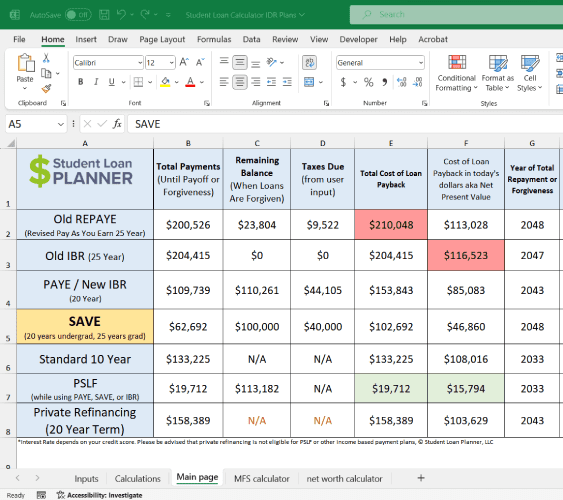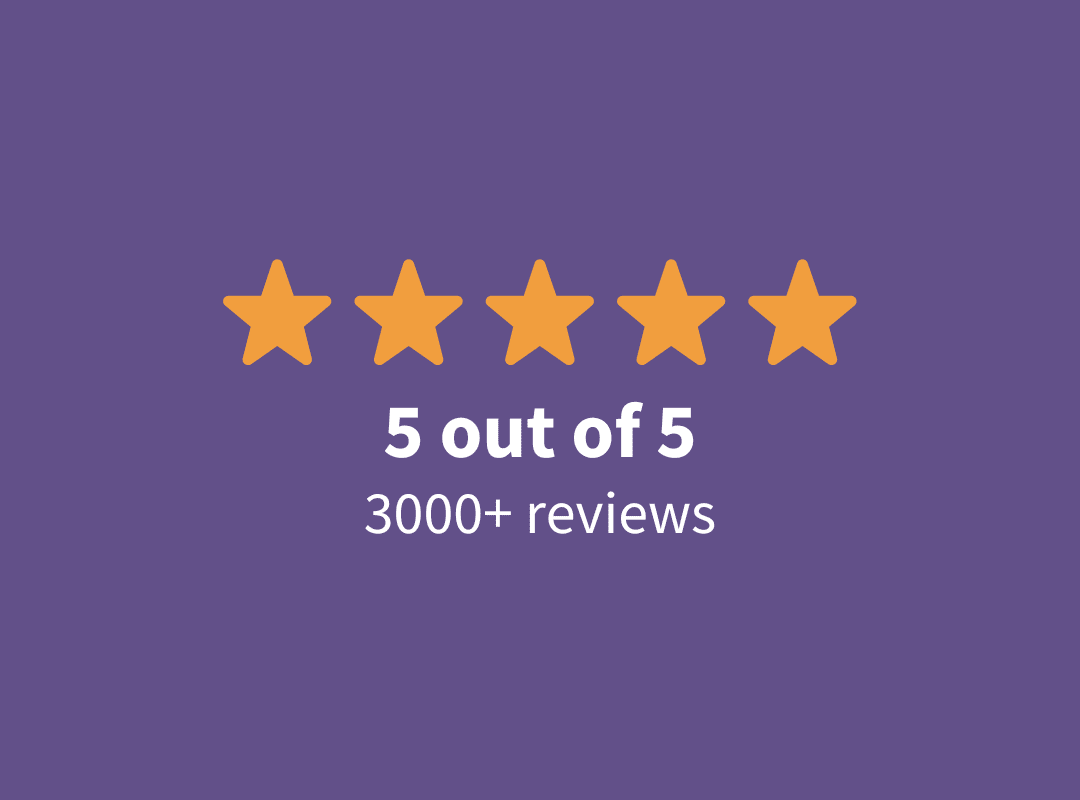Income-driven repayment plans and Public Service Loan Forgiveness (PSLF) get a lot of press. But both require you to have federal student loans and require 10 or more years of monthly payments working full-time for a nonprofit or public employer before you can qualify for any forgiveness benefit.
But there are other grants and student loan repayment assistance programs that may be able to help you pay off your higher education debt faster. While some grants, like the Federal Pell Grant, are only available to enrolled students, others are specifically designed to help graduates manage their student debt.
Get Started With Our New IDR Calculator

And many of these student loan grants offer payment assistance to both private and federal student loan borrowers. Here are 10 of the best student loan grants to pay off student debt.
Note that since the COVID-19 pandemic happened and federal forbearance relief measures were put in place, many student loan borrowers have been impacted – some for positive, some for worse. To learn more about your options, check out our guide.
1. National Health Service Corps (NHSC) Loan Repayment Program
The NHSC Loan Repayment Program pays up to $50,000 in student loan payments for medical professionals who sign a two-year service contract to work in a Health Professional Shortage Area (HPSA).
HSPAs are areas identified as having a shortage of healthcare providers who serve in primary care, dental care or mental health. Healthcare professionals working at HPSA sites with a score of 14 or higher are eligible for the full $50,000 ($25,000 for part-time clinicians). Those working at HPSA sites with scores of 13 or below are eligible for up to $30,000.
And those who still have remaining unpaid student debt after their two-year service contract ends can apply for a continuation contract. If accepted, NHSC will pay the entire remaining balance.
2. Nurse Corps Loan Repayment Program
The Nurse Corps Loan Repayment Program pays up to 85% of the student loan debt of registered nurses, advanced practitioner registered nurses and nurse faculty. To qualify, nurses must serve in a Critical Shortage Facility (CFS) or work in an accredited school of nursing.
If your application for this grant program is accepted, the Nurse Corps will pay 60% of your debt over two years. There's also the option to extend to a third year to get another 25% paid off.
3. National Institutes of Health (NIH) Loan Repayment Programs
The NIH Loan Repayment Programs are a set federally funded programs that repay up to $50,000 annually of the medical debt of researchers who choose to work in specific high-need fields.
There are several programs for researchers who are not employed by NIH (extramural) and a few for researchers who are NIH employees (intramural).
Notable NIH LRP programs include the Contraception and Infertility Research Loan Repayment Program and the National Institute of Mental Health Loan Repayment Program. The other qualifying programs are listed below:
Extramural programs
- Clinical Research Loan Repayment Program (LRP-CR)
- Pediatric Research Loan Repayment Program (LRP-PR)
- Health Disparities Research Loan Repayment Program (LRP-HDR)
- Individuals from Disadvantaged Backgrounds Loan Repayment Program (LRP-IDB)
Intramural programs
- General research
- Aids research
- Clinical research for individuals from disadvantaged backgrounds
To qualify, your loans must equal at least 20% of your base salary. Any income you earn outside of the research organization is excluded from this requirement. You also must be doing research for at least 20 hours a week during each quarterly period that you receive a NIH award.
4. Teacher Cancellation of Perkins Loans
Low-income schools often have trouble attracting top teaching talent. The federal government has instituted two different teacher student loan repayment grants as incentive programs for teachers to serve in these schools.
One of these is cancelation of Perkins Loans. Teachers with Federal Perkins Loans can qualify to have 100% of their loans canceled. To qualify, teachers must meet one of the following eligibility requirements:
- Teach in a school serving low-income students
- Serve as a special education teacher
- Teach in fields currently designated as having a shortage (Fields include mathematics, science, foreign languages and bilingual education.)
5. Teacher Loan Forgiveness Program
The Teacher Loan Forgiveness Program with the U.S. Department of Education forgives up to $17,500 of a teacher’s student debt on qualifying loan types.
To qualify, teachers must serve in an eligible low-income school or educational agency for at least five years. Teachers must also be “highly qualified.” This includes having a bachelor’s degree and full state certification as a teacher. Finally, teachers must not have student loan balances from before Oct. 1, 1998.
Applications for this program should only be turned in after teachers have completed their five years of service, not before.
6. Department of Justice Attorney Student Loan Program (ASLRP)
The cost of law school is sky-high and shows no signs of dropping anytime soon. Even in a field with a reputation for paying well, the debt can be suffocating without student loan forgiveness or assistance for lawyers.
Thankfully, there are a couple of grants to pay off student loans for legal professionals.
One of these is the Attorney Student Loan Repayment Program (ASLRP). The ASLRP will match up to $6,000 per year of an individual attorney’s student loan payments for a maximum of three years.
To qualify, attorneys must have at least $10,000 of student loan debt and commit to serving in the Department of Justice for at least three years.
7. John R. Justice Student Loan Repayment Program
The Bureau of Justice Assistance makes funds available to each state to repay the student loans of qualified attorneys as part of the John R. Justice Student Loan Repayment Program. This grant offers up to $10,000 of student loan assistance per year and $60,000 lifetime for public defenders and prosecutors.
Like the ASLRP, you must commit to serving as a public defender or state prosecutor for at least three years.
8. Congress’s Military College Loan Repayment Program (CLRP)
Many former military service members have taken advantage of the GI Bill, which pays for the education of military members enrolled in school after their term of duty.
But what about service people who acquired student debt before their enlistment? There are several grants to pay off student loans that military members or their families can qualify for.
The CLRP allows any branch of the military to make up to $65,000 in student loan repayments for non-prior enlistees.
Army and Navy active recruits can get the full $65,000. Army Reserve enlistments can receive up to $20,000, and Navy Reserves can receive up to $10,000. The Air Force only pays for active enlistments and sets a maximum of $10,000.
9. Iraq and Afghanistan Service Grant
The Iraq and Afghanistan Service Grant helps with paying off the student loans of the children of people who lost their lives defending our country in Iraq or Afghanistan.
Here are the qualification requirements:
- You must have been under 24 years of age or enrolled in college at least part time when your parent or guardian died serving our country overseas.
- You must meet all the Federal Pell Grant eligibility requirements except for your Expected Family Contribution.
10. The Veterinary Medicine Loan Repayment Program (VMLRP)
Through the Veterinarian Medical Loan Repayment Program (VMLRP), veterinarians can receive up to $25,000 per year of student loan repayment. To qualify for VMLRP, you must agree to work in a NIFA-designated veterinarian shortage situation for at least three years. See the shortage areas map.
If accepted, you could receive up to $75,000 in total payment assistance through the VMLRP program. The application process typically falls between March and June of each year. See our full breakdown of the VMLRP program.
Are there scholarships to pay off student loans?
Companies and individuals usually establish scholarships for students currently enrolled, not graduates who already owe student loan debt.
One reason for this is that donors can get tax benefits by donating to an institution, such as for its scholarship fund; they can’t get the same benefits by donating funds directly to an individual.
If you receive a significant sum of money to pay back your student loans, that lump sum may be considered taxable income. If you get it while you're still in school, you might not have to pay taxes on the money if it is used for direct educational expenses like tuition.
Turn to these programs and grants to pay off student loans
If you don’t qualify for any of the grants from this list, don't worry yet. There may still be programs that could help with paying off your student loans. Check out our Ultimate Guide to Student Loan Forgiveness Programs for a comprehensive list of options.
If you’re not sure which grant or student loan forgiveness program is your best choice, consider a student loan consultation. We’ve helped hundreds of individuals find creative ways to pay off their federal and private student loans faster.
During a consultation, we discuss all the repayment options available to you, including student loan refinancing options for a lower interest rate. Whether through student loan grants or other means, we’d love to help you find a direct path to student loan freedom.
We're a professional consulting company staffed with CFAs, CFPs, and CPAs who make custom student loan repayment plans for borrowers with significant debt anxiety.
Refinance student loans, get a bonus in 2024
| Lender Name | Lender | Offer | Learn more |
|---|---|---|---|

|
$500 Bonus
*Includes optional 0.25% Auto Pay discount. For 100k or more.
|
Fixed 5.24 - 9.99% APR*
Variable 6.24 - 9.99% APR*
|
|

|
$1,000 Bonus
For 100k or more. $300 for 50k to $99,999
|
Fixed 4.99 - 10.24% APPR
Variable 5.28 - 10.24% APR
|
|

|
$1,000 Bonus
For 100k or more. $200 for 50k to $99,999
|
Fixed 4.99 - 9.74% APR
Variable 5.89 - 9.74% APR
|
|

|
$1,050 Bonus
For 100k+, $300 for 50k to 99k.
|
Fixed 5.44 - 9.75% APR
Variable 5.49 - 9.95% APR
|
|

|
$1,275 Bonus
For 150k+, $300 to $575 for 50k to 149k.
|
Fixed 5.48 - 8.69% APR
Variable 5.28 - 8.99% APR
|
|

|
$1,250 Bonus
For 100k+, $350 for 50k to 100k. $100 for 5k to 50k
|
Fixed 5.24 - 10.99% APR
Variable 5.28 - 12.43% APR
|
Not sure what to do with your student loans?
Take our 11 question quiz to get a personalized recommendation for 2024 on whether you should pursue PSLF, Biden’s New IDR plan, or refinancing (including the one lender we think could give you the best rate).

Comments are closed.